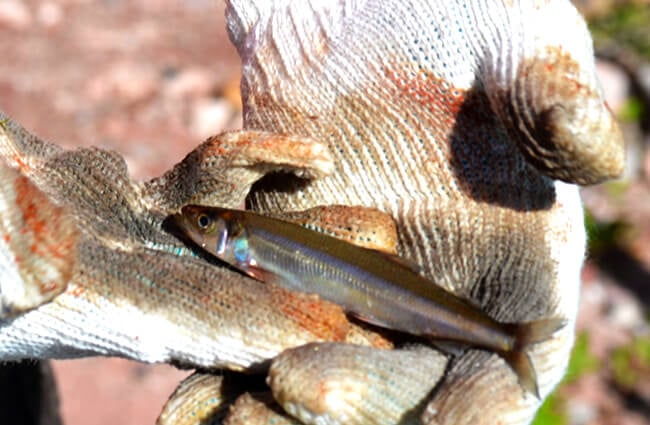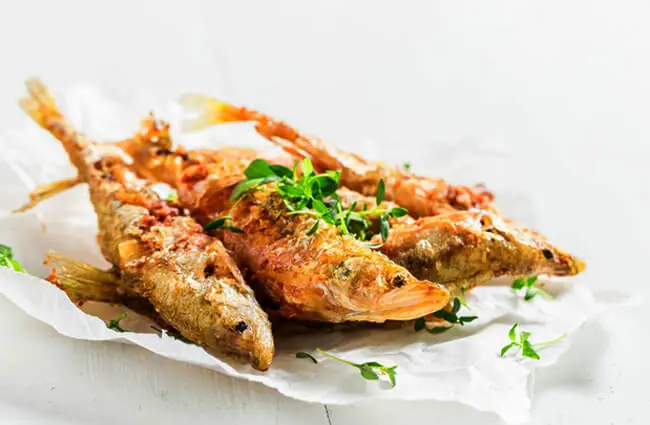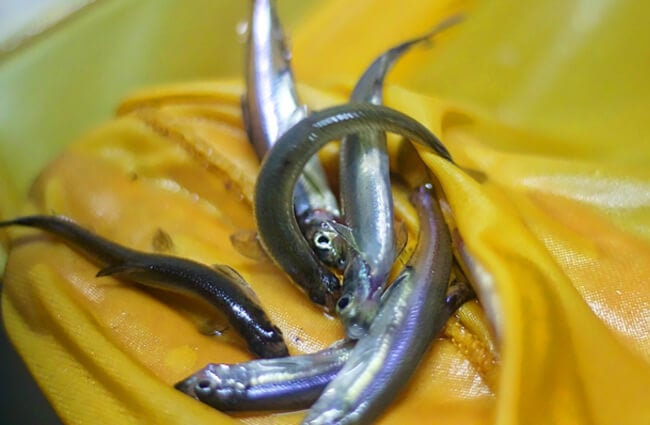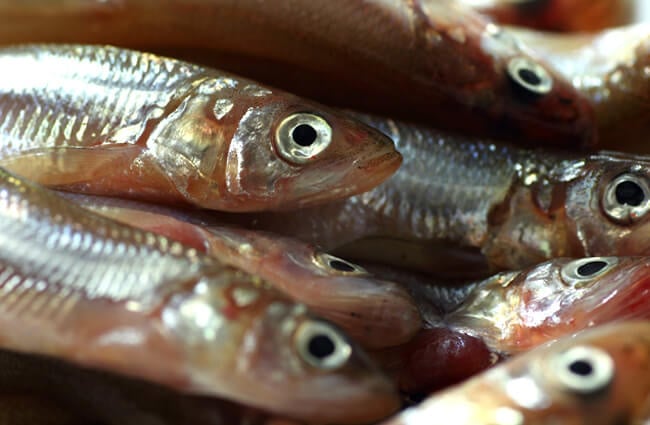The Shimmering Enigma: Unveiling the World of Smelt
In the vast aquatic tapestry of our planet, some creatures shine brighter than others, not just in appearance, but in their ecological significance and intriguing life cycles. Among these often-overlooked marvels is the Smelt, a small, silvery fish that plays a surprisingly large role in both natural ecosystems and human culture. From their unique cucumber-like scent to their epic migrations, Smelt are far more than just another fish in the sea or river. This article delves into the fascinating world of Smelt, exploring their biology, behavior, and their intricate connections to the world around them.
What Exactly is a Smelt?
The term “Smelt” generally refers to a group of small, slender fish belonging primarily to the family Osmeridae, though some other families like Retropinnidae (southern smelts) and Galaxiidae (galaxias) are also sometimes included. These fish are typically characterized by their elongated bodies, often translucent appearance, and a distinctive silvery sheen. Most species possess an adipose fin, a small, fleshy fin without rays located between the dorsal and caudal fins, a trait shared with their distant relatives, the salmon and trout.
Smelt are generally small, rarely exceeding 20-30 centimeters (8-12 inches) in length, making them a perfect bite-sized meal for a myriad of predators. Their delicate bones and mild flavor have also made them a culinary favorite in many parts of the world.

A World of Water: Smelt Habitats
Smelt are incredibly adaptable, inhabiting a diverse range of aquatic environments across the Northern Hemisphere. Their habitat preferences vary significantly between species, showcasing a remarkable evolutionary flexibility.
Diverse Aquatic Homes
- Marine Environments: Many Smelt species, such as the Capelin (a type of Smelt), spend the majority of their lives in cold, open ocean waters, often forming massive schools in coastal areas.
- Estuarine Habitats: The brackish waters of estuaries, where freshwater meets saltwater, are crucial for many anadromous Smelt species. These areas provide rich feeding grounds and serve as transition zones during their migrations.
- Freshwater Systems: Some Smelt species, like the Rainbow Smelt, have established landlocked populations in large freshwater lakes, particularly in North America. Others are entirely freshwater residents, living out their lives in rivers and lakes.
Finding Smelt in the Wild
For the animal lover or aspiring zoologist hoping to observe Smelt in their natural environment, timing and location are key. Smelt are often found in cold, clear waters. During their spawning runs, typically in early spring, they migrate from larger bodies of water into shallower rivers and streams. Look for them in areas with gravelly or sandy bottoms, often in the lower reaches of rivers or near the mouths of tributaries flowing into lakes or oceans. Their schooling behavior can sometimes make them visible as shimmering masses in the water, particularly at night when they are less wary. Remember to observe from a distance and avoid disturbing their sensitive spawning activities.

The Smelt Family Tree: A Glimpse into Evolution
Smelt belong to the order Salmoniformes, placing them in a broad evolutionary lineage that includes salmon, trout, and whitefish. This connection is evident in shared characteristics like the adipose fin. Their evolutionary journey has seen them adapt to a wide array of aquatic conditions, leading to the diversification of the Osmeridae family into numerous genera and species.
The family Osmeridae is thought to have originated in the North Pacific, with subsequent dispersal into the Atlantic and freshwater systems. Their ability to tolerate varying salinities, from full marine to pure freshwater, has been a significant factor in their widespread distribution and speciation. Some species exhibit anadromy, migrating from the sea to spawn in freshwater, while others are amphidromous, moving between fresh and saltwater at different life stages, not necessarily for spawning. Still others have become entirely landlocked, adapting fully to freshwater lake environments.
Dining Habits of a Small Predator: Smelt’s Diet
Despite their diminutive size, Smelt are active and efficient predators, playing a vital role in the transfer of energy within aquatic food webs. Their diet primarily consists of small invertebrates, reflecting their position as a key link between plankton and larger fish.
What’s on the Menu?
- Zooplankton: For most Smelt species, especially juveniles, zooplankton forms the cornerstone of their diet. These microscopic crustaceans and other tiny animals are abundant in both marine and freshwater environments.
- Small Crustaceans: As Smelt grow, they expand their diet to include larger crustaceans such as copepods, amphipods, and mysid shrimp.
- Insect Larvae: In freshwater habitats, aquatic insect larvae are a significant food source.
- Smaller Fish: Larger Smelt, particularly species like the Rainbow Smelt, can become piscivorous, preying on the fry and juveniles of other fish species, and even smaller Smelt.
This varied diet highlights their opportunistic feeding strategy, allowing them to thrive in diverse environments where different food sources are available. Their schooling behavior also aids in foraging efficiency, allowing them to collectively filter-feed or ambush prey.
The Dance of Life: Smelt Mating and Reproduction
The reproductive cycle of Smelt is a remarkable display of instinct and adaptation, often involving significant migrations and precise timing.
Spawning Rituals
Most Smelt species are seasonal spawners, with the majority undertaking their reproductive activities in the spring, typically from late winter to early summer, depending on the species and geographical location. The trigger for spawning is often a combination of increasing water temperatures and photoperiod (day length).
- Migration: Anadromous Smelt migrate from saltwater into freshwater rivers and streams, sometimes traveling considerable distances upstream. Landlocked populations move from deeper lake waters into shallower areas or tributary streams.
- Spawning Grounds: Preferred spawning sites are typically shallow areas with gravel, sand, or rocky bottoms, often with moderate current. The adhesive eggs need a substrate to attach to.
- Egg Laying: Females release thousands of small, spherical, adhesive eggs, which are then fertilized by males. The eggs stick to rocks, vegetation, or other submerged objects. Some species, like the Capelin, spawn on beaches, with eggs adhering to sand grains.
- Larval Development: After a relatively short incubation period, typically a few weeks, the eggs hatch into tiny larvae. These larvae are often pelagic, drifting with currents as they develop and begin to feed on microscopic organisms.
The sheer number of eggs laid by a single female is a testament to their strategy for survival, as many eggs and larvae will fall victim to predators or environmental hazards.
The Unsung Heroes: Smelt’s Role in the Ecosystem
Despite their small stature, Smelt are ecological linchpins, serving as a critical bridge in aquatic food webs. Their abundance and position make them indispensable to the health of many ecosystems.
Keystone Prey Species
Smelt are a primary food source for a vast array of predators, both aquatic and terrestrial. This makes them a crucial conduit for energy transfer from lower trophic levels (plankton) to higher ones (larger predators).
- Fish: Larger predatory fish such as salmon, trout, cod, walleye, and pike heavily rely on Smelt as a food source, especially during their migrations or when Smelt are schooling.
- Birds: Many seabirds and piscivorous (fish-eating) birds, including gulls, terns, cormorants, and various diving ducks, feed extensively on Smelt.
- Mammals: Marine mammals like seals, porpoises, and even some whales consume large quantities of Smelt. In freshwater systems, otters and mink may also prey on them.
Impact on Zooplankton and Water Quality
By consuming vast quantities of zooplankton, Smelt help regulate plankton populations, which in turn can influence water clarity and nutrient cycling. Some Smelt species are also considered indicator species, meaning their presence or absence, and their overall health, can provide valuable insights into the environmental quality of their habitats. A decline in Smelt populations can signal broader ecological issues, such as pollution, habitat degradation, or the impact of invasive species.
Smelt and Humanity: A Shared History
The relationship between Smelt and humans is multifaceted, encompassing cultural traditions, economic activities, and conservation challenges.
Cultural Significance and Culinary Delights
Smelt have been a valued food source for centuries in many cultures. Their delicate flavor and small size make them popular for pan-frying, deep-frying, or roasting whole. In regions like the Great Lakes of North America, Japan, Korea, and parts of Europe, Smelt fishing and consumption are deeply ingrained traditions. Smelt festivals are held annually in some communities, celebrating the spring runs and the bounty they bring. They are often enjoyed with a simple squeeze of lemon or a dipping sauce, highlighting their natural taste.

Interaction and Management
Human interaction with Smelt extends beyond the dinner plate:
- Fisheries: Both commercial and recreational fisheries target Smelt. Ice fishing for Smelt is a popular winter activity in many northern regions. Sustainable management practices, including catch limits and seasonal restrictions, are crucial to prevent overfishing.
- Conservation Challenges: Many Smelt populations face significant threats. Habitat loss and degradation due to urbanization, pollution, and dam construction disrupt their spawning grounds and migratory routes. The introduction of invasive species, such as the Rainbow Smelt in some areas, can outcompete native Smelt or prey on their eggs and larvae, leading to declines in native populations. Climate change also poses a threat by altering water temperatures and flow regimes.
- Aquaculture: While not as widely farmed as other fish, there is ongoing research into the aquaculture potential of certain Smelt species to supplement wild catches and support conservation efforts.
Encountering Smelt in the Wild: What to Do
If you are fortunate enough to encounter Smelt in their natural habitat, particularly during their spawning runs, remember that responsible observation is paramount.
- Observe from a Distance: Avoid disturbing the fish, especially if they are actively spawning. Loud noises or sudden movements can stress them and disrupt their natural behaviors.
- Respect Their Habitat: Do not wade into spawning areas or disturb the riverbed. Their eggs are delicate and easily dislodged or damaged.
- Know Local Regulations: If you are considering fishing for Smelt, be aware of and adhere to all local fishing regulations, including seasons, catch limits, and gear restrictions. Many areas have specific rules to protect spawning populations.
- Report Unusual Sightings: If you notice a large fish kill, signs of pollution, or unusual fish behavior, report it to local wildlife or environmental authorities. This information can be vital for monitoring ecosystem health.
Caring for Smelt: A Zookeeper’s Guide
Keeping Smelt in captivity, whether for research, conservation, or educational display, requires specialized knowledge and meticulous care to replicate their natural conditions.
Essential Tasks for Smelt Care
- Water Quality Management: Smelt require cold, highly oxygenated water. Maintaining precise temperature ranges (often below 15°C or 59°F), stable pH, and low ammonia/nitrite levels is critical. Regular water changes and robust filtration systems are essential.
- Habitat Mimicry: The aquarium or tank should mimic their natural environment. For freshwater species, this means a substrate of fine gravel or sand, with areas of moderate current. For marine species, a larger, open tank with good water flow is needed. Provide hiding spots if necessary, though many Smelt are schooling fish.
- Diet and Feeding: A varied diet is crucial. Live or frozen zooplankton (e.g., daphnia, brine shrimp, copepods) should form the bulk of the diet for smaller Smelt. Larger individuals can be offered small pieces of krill, mysis shrimp, or specialized carnivorous fish pellets. Feed small amounts frequently to prevent water fouling.
- Health Monitoring: Regularly observe Smelt for signs of stress or disease, such as lethargy, clamped fins, unusual swimming patterns, lesions, or changes in coloration. Quarantine new arrivals to prevent disease introduction.
- Spawning Considerations: If breeding is desired, specific conditions for spawning (e.g., temperature cues, suitable substrate) must be provided. This can be challenging in captivity.

What to Avoid
- Overcrowding: Smelt are schooling fish, but too many individuals in a confined space will lead to stress, poor water quality, and increased disease susceptibility.
- Poor Water Quality: Fluctuations in temperature, high levels of nitrates, or insufficient oxygen are detrimental and can quickly lead to mortality.
- Incompatible Tank Mates: Avoid housing Smelt with aggressive fish or fish that are large enough to prey on them. Also, avoid species that require significantly different water parameters.
- Sudden Environmental Changes: Rapid changes in water temperature, pH, or salinity can be highly stressful. Acclimate new fish slowly and make environmental adjustments gradually.
- Stress During Handling: Smelt are delicate. Minimize handling and use appropriate, soft nets if transfer is necessary.
Fascinating Smelt Facts
The world of Smelt is full of intriguing details that make them truly unique:
- The Cucumber Scent: Many Smelt species, particularly the Rainbow Smelt, emit a distinctive odor reminiscent of fresh cucumbers, especially when handled or freshly caught. The exact chemical compound responsible for this smell is still a subject of scientific interest.
- Short Lifespan: Most Smelt species have relatively short lifespans, often living only 2 to 5 years. This rapid life cycle emphasizes their role as a fast-turnover prey species.
- Massive Schools: Smelt are renowned for forming incredibly dense schools, sometimes numbering in the millions. This schooling behavior offers protection from predators and aids in foraging efficiency.
- Anadromous Migrators: Many Smelt species are anadromous, meaning they spend most of their adult lives in saltwater but migrate to freshwater rivers and streams to spawn.
- Ice Fishing Favorite: In many northern regions, Smelt are a popular target for ice fishing, with anglers often setting up shanties over frozen lakes and rivers to catch them.
- Sexual Dimorphism: While often subtle, some Smelt species exhibit sexual dimorphism, with males developing nuptial tubercles (small bumps) on their bodies during the spawning season, or having slightly different coloration.
- Conservation Concern: Several Smelt species, such as the Delta Smelt in California, are critically endangered due to habitat loss, water diversions, and invasive species, highlighting the urgent need for conservation efforts.

Conclusion: The Enduring Charm of the Smelt
From their shimmering scales to their vital role in aquatic ecosystems, Smelt are truly remarkable fish. They are a testament to the intricate balance of nature, serving as a crucial food source, an indicator of environmental health, and a fascinating subject for study. Whether you are a student researching their life cycle, an animal lover seeking them in the wild, an aspiring zoologist delving into their biology, a hiker encountering them in a stream, or a zookeeper dedicated to their care, the world of Smelt offers endless opportunities for discovery and appreciation. By understanding and valuing these small but mighty fish, we can contribute to their conservation and ensure their continued presence in our waters for generations to come.

![Red Angus Closeup of a beautiful Red Angus cowPhoto by: U.S. Department of Agriculture [pubic domain]https://creativecommons.org/licenses/by/2.0/](https://animals.net/wp-content/uploads/2020/03/Red-Angus-4-238x178.jpg)




![Red Angus Closeup of a beautiful Red Angus cowPhoto by: U.S. Department of Agriculture [pubic domain]https://creativecommons.org/licenses/by/2.0/](https://animals.net/wp-content/uploads/2020/03/Red-Angus-4-100x75.jpg)

